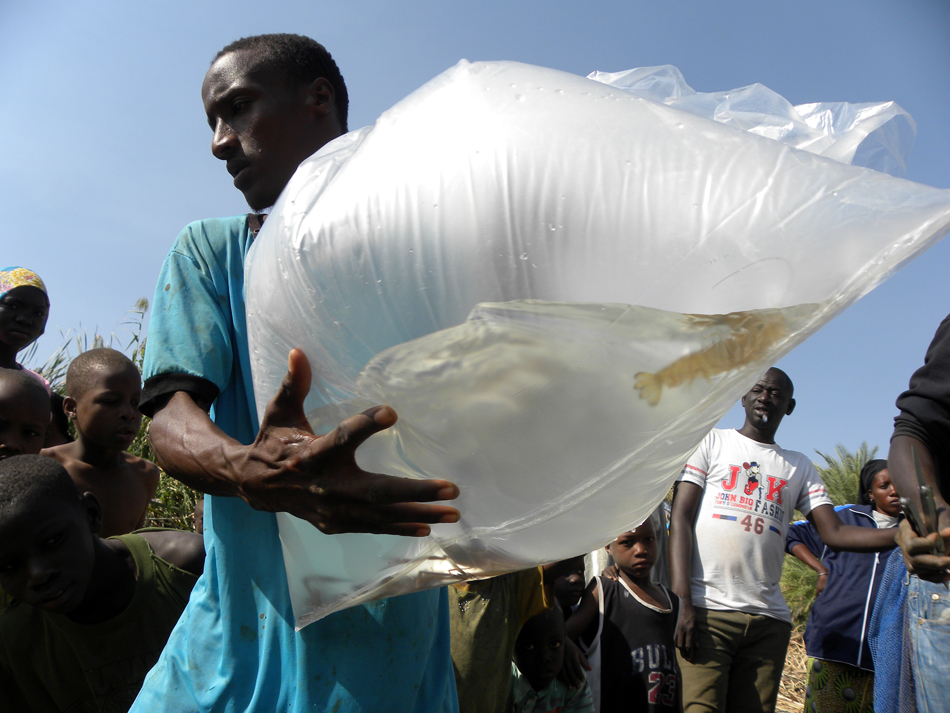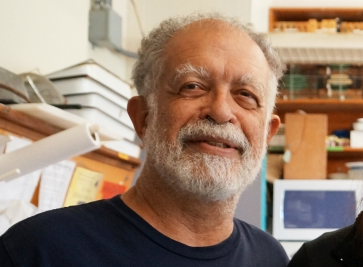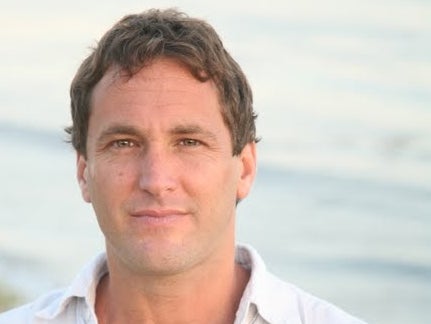
A Win-Win-Win-Win



Built in 1986, the Diama Dam between Senegal and Mauritania was constructed on the Senegal River to improve irrigation for nearby crops and prevent upstream saltwater intrusion. However, shortly after its completion, it became evident that what many people in the area would have gained in economic opportunity they lost in public health.
The dam, while improving irrigation and providing a source of fresh water, also presented ideal conditions for snails that host the Schistosoma parasite. As a result, those who live and work around that section of the Senegal River are constantly infected and reinfected by the flatworm and suffer from the effects of schistosomiasis. Senegal has one of the world’s worst schistosomiasis problems.
“It’s a debilitating disease,” said Armand Kuris, UC Santa Barbara professor of zoology and one of the world’s leading parasitologists. Unlike other serious contagious diseases, such as tuberculosis or HIV/AIDS, schistosomiasis is chronic, said Kuris. Rather than killing outright, schistosomiasis erodes the human host’s health as the worms multiply in his or her body. Eggs, if not expelled in the host’s urine or feces, can migrate to different organs, disrupting their functions. The result is overall poor physical health, an impaired immune system and cognitive difficulty.
A Chronic Disadvantage
The disease has wider implications, according to UCSB geography professor David López-Carr, whose research focuses on the human dimensions of environment change, particularly in the developing areas of the world, as well as rural poverty and development. Those chronically afflicted tend to be the rural poor, people who live and work, bathe and play in the river and surrounding waterways and farms. This is where the infected freshwater snails thrive and continuously shed cercariae, the free-swimming larvae of the parasite that seek out and penetrate human skin. Because the people are constantly exposed to the parasite, and don’t have the means to avoid it in their daily lives or afford treatment, this population is chronically at a health and socioeconomic disadvantage, with poverty and poor health affecting each other in a self-perpetuating cycle.
“It makes you less competent at anything you do,” said López-Carr. “It makes you less effective as a parent or in your work — and that has a huge economic impact on a society.”
Conventional treatments for this ongoing schistosomiasis epidemic have consisted of drug-based control programs and preventive chemotherapy, programs that have had successes. However, the environment of the Senegal River, with its impacted ecology, provides the setting for rapid reinfection, according to Kuris, who has been studying schistosomiasis in sub-Saharan Africa for 25 years. Medical programs to cure people of schistosomiasis, though effective, are ultimately unsustainable if the source of the parasites remains unmitigated, he said.
Looking to Prawns
However, there is hope, and it might be in the form of a local river prawn (Macrobrachium vollenhovenii), currently under study by Kuris and colleagues in Senegal, that has the potential to turn the situation around. Reintroducing the crustacean into the affected areas to prey on the snails could disrupt the parasite’s life cycle and diminish, if not eliminate, the schistosome’s presence in the water.
“In the big picture, what we’d really like to do is eliminate this scourge,” said López-Carr. Depending on the efficiency and effectiveness of the method, efforts in the area to reduce the prevalence of and infections by the parasite may not only get a much-needed boost but the local economy may also profit. The prawns, which do not become infected with the flatworm larvae they eat along with the host snails, could also potentially be farmed for food and sold at market, he said.
This novel way of eradicating an infectious disease like schistosomiasis has many levels and, with a highly competitive $1.5 million grant provided by the National Science Foundation, López-Carr, Kuris and a host of researchers from various disciplines will be studying these levels by looking at, among other things, the complex interaction of human and natural forces that may alter patterns of disease transmission. The principal investigators in this project also include James Sanchirico, professor in the Department of Environmental Science & Policy at UC Davis; Kentucky State University aquaculture expert James Tidwell; and Susanne Sokolow, associate research biologist dually appointed at UCSB and Stanford University.
“The main question is, ‘What are the predictors of human infection or reinfection?’” said López-Carr. Because schistosomiasis is an insidious disease — people can have it without dying and often without obvious outward symptoms for long periods of time — the geographic, social and demographic elements that may influence who gets the disease and how infection, in turn, affects people and their interactions with the local environment have not yet been studied in-depth, according to López-Carr.
Doubling Up on Studies
“We plan to couple the study of the biological dynamics with models of the economics of the disease and of the prawn intervention,” said Sokolow. Small prawns are most effective at killing snails, she added, so the ones that have grown large can be harvested for sale or consumption, provided small ones are stocked in their place. “In this project, our bio-economic models will aim to answer the questions of how many prawns to stock, when to harvest, and how to devise the optimal win-win-win-win solution that benefits human health, environmental restoration, hunger alleviation and economic development,” she said.
This grant, awarded by the NSF’s Dynamics of Coupled Natural and Human Systems (CNH) Program, will fund a multipronged approach that will include drug treatments and reintroduction of the prawns, surveys, monitoring, interviews and experiments that are expected to provide insights across various fields, including trophic ecology, epidemiology, aquaculture, economics and other social sciences as well as mathematical modeling. While the results of this study will relate directly to this region of Africa, the valuable information gained could apply to natural and human systems that involve the transmission of waterborne diseases in rivers and other bodies of water in the world. Progress on the researchers’ efforts can be found at the website for The Upstream Alliance, the umbrella organization under which all collaborators are working.
Funding for the project has also been provided by the Bill & Melinda Gates Foundation and Grand Challenges Canada.
“It is, we hope, a very illustrative example whereby we can intervene in a natural system in a way that is not destructive but in a way that can replenish a native resource and improve health and livelihoods,” said López-Carr.



